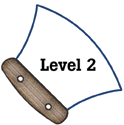|
National Science Education Standards
Objects have many observable properties, including size, weight, shape,
color, temperature, and the ability to react with other substances. These
properties can be measured using tools, such as rulers, balances, and
thermometers. (Page 127)
Materials can exist in different states—solid, liquid, and gas.
Some common materials, such as water, can be changed from one state to
another by heating or cooling. (Page 127)
A substance has characteristic properties, such as density, a boiling
point, and solubility, all of which are independent of the amount of the
sample. A mixture of substances often can be separated into the original
substances using one or more of the characteristic properties. (Page 154).
|
|
Benchmarks
Heating and cooling cause changes in the properties of materials. Many
kinds of changes occur faster under hotter conditions. (Page 77)
When a new material is made by combining two or more materials, it has
properties that are different from the original materials. For that reason,
a lot of different materials can be made from a small number of basic
kinds of materials. (Page 77)
|


